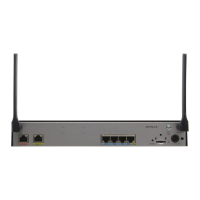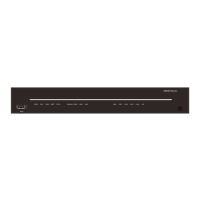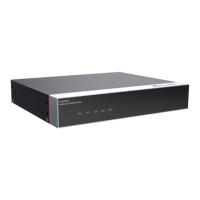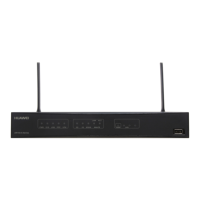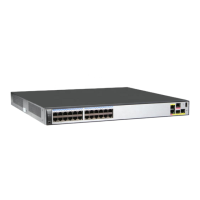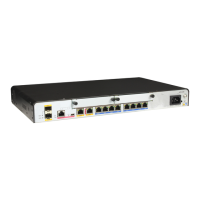The system view is displayed.
Step 2 Run:
interface bridge-if bridge-id
A Bridge-if interface is created and the Bridge-if interface view is displayed.
Step 3 Run:
ip address ip-address { mask | mask-length }
An IP address is configured for the Bridge-if interface.
Step 4 (Optional) Run:
mac-address mac-address
A MAC address is configured for the Bridge-if interface.
----End
2.6.6 Enabling IP Routing for a Bridge Group
A bridge group can route protocol packets after IP routing is enabled.
Context
IP routing enables a bridge group to bridge and route packets. If IP routing is not enabled, all
protocol packets can only be bridged. After IP routing is enabled, specified protocol packets can
be bridged or routed depending on the configuration.
Procedure
Step 1 Run:
system-view
The system view is displayed.
Step 2 Run:
bridge bridge-id
The bridge group view is displayed.
Step 3 Run:
routing ip
IP routing is enabled for the bridge group.
The IP routing function cannot be configured if any of member interfaces in the bridge group
has an IP address. Before configuring the IP routing function, delete the IP addresses of these
member interfaces.
----End
2.6.7 (Optional) Disabling a Bridge Group from Bridging Specified
Protocol Packets
If a bridge group is disabled from bridging specified protocol packets, the bridge group will
discard the protocol packets.
Huawei AR3200 Series Enterprise Routers
Configuration Guide - LAN 2 Transparent Bridging Configuration
Issue 02 (2012-03-30) Huawei Proprietary and Confidential
Copyright © Huawei Technologies Co., Ltd.
58

